Kelly Carmichael – 30 August, 2012
While many of the intricate physical, social and economic networks and links that control our lives were left unexplored; much was made of the tired old idea that we are all the same. Although refreshingly light on British or American artists and featuring few of the international biennale circuit's usual suspects, at times ‘all our relations' attempt to honour global diversity felt like a very Western approach to ‘inclusivity'.
Sydney
All Our Relations
Curated by Catherine de Zegher and Gerald McMaster
27 June - 16 September 2012
The 18th edition of the Biennale of Sydney saw a duo of artistic directors take the reins for the first time, the pairing of Catherine de Zegher and Gerard McMaster setting the stage for the exhibition and emphasising a process of collaboration and dialogue. Built around the theme ‘all our relations’, this rich and ambiguous premise promised so much, but ultimately failed to ignite.
With over 100 artists more than 200 works, as in previous years the Biennale was spread across three main venues, the Art Gallery of NSW, the Museum of Contemporary Art, and Cockatoo Island; with supplementary displays at Pier 2/3 and Carriageworks. The MCA and AGNSW each played host to a sub-theme, while Cockatoo Island itself remained far more intriguing than most of the art it housed. The exhibition at the AGNSW subtitled In Finite Blue Planet took a natural history museum type approach, emphasised by the manner in which some works were shoehorned into a too tight space. Part wildlife photography, part social reflection, its recurring themes of war, death, migration, and the suffering of both planet and people emerged out of gloomy darkened spaces.
The collection of works at the MCA took a different tack, emphasising collaboration, the rejoining of disparate parts and meaningful solutions. Subtitled Possible Composition and given major gallery space, the MCA portion of the Biennale might have been expected to tease out the rich allusions of ‘all our relations’. Instead, the conceptual framework quickly came to feel empty and commodified. This Biennale was pitched on an idea that artists from around the world are deeply interconnected, but what actually came to pass as they laboured under the exhibition’s overarching theoretical frame was a flattening out of cultural difference.
While many of the intricate physical, social and economic networks and links that control our lives were left unexplored; much was made of the tired old idea that we are all the same. Although refreshingly light on British or American artists and featuring few of the international biennale circuit’s usual suspects, at times ‘all our relations’ attempt to honour global diversity felt like a very Western approach to ‘inclusivity’. Although there was beauty here - a display of delicate abstract canvases by Liang Quan in particular - as well as some stand out pieces, much of what was on display was lacking in impact, either as individual art works or biennale components. The curatorial response felt reiterative, while in a world flush with examples of innovative participatory models, very few were demonstrated here. In many instances, especially those works involving cross-cultural conversations, the concept of collaboration seemed to be more about how things look rather than any meaningful connection or engagement.
The ferry trip across to Cockatoo Island also signalled a conceptual shift from inclusivity to materiality. Over 50 works are installed in the former jail and naval yard, including all three New Zealand artists showing at the Biennale. Peter Robinson’s audacious installation Gravitas Lite in the former Turbine Hall is constructed from over 100,000 chain links of polystyrene, its sheer scale and snowy white weightless volume at odds with both the decaying industrial surroundings and the very material it is made from. Wrapping itself around, snaking over, and seeming to cannibalise the industrial fixtures, Robinson’s intricate lengths of chain appeared to emerge from rough-hewn lumps, like tentacles or an endless series of networks ready to devour whatever lies in its path. The work of Sriwhana Spong, however felt a little lost in its too large shed-like setting. Learning Duets saw a characteristic length of fanta-dyed silk separating a video work featuring dancer Benjamin Ord in an adjacent room. At the tip of Cockatoo Island the second part of Tiffany Singh’s work Knock On The Sky Listen To The Sound was installed inside the shell of building now open to the elements. On a breezy afternoon the chorus of bamboo wind chimes acted as a siren’s song to weary Biennale visitors, many spending considerable time here and Singh’s joyful, colourful work at Pier 2/3.
With too many works to see, and much of it not very engaging, the curatorial narrative and distribution of works at Cockatoo Island felt haphazard. One such example was the installation They Shimmer Still by Pakistani artist Imran Qureshi. Painted on a former launching slip where it was barely visible and lost to the open surroundings, it was an incredible disservice to Qureshi, whose practice of all the artists selected under the ‘all our relations’ premise perhaps most wholly illustrates the complex matrix of affinities and exchanges that make up contemporary life.
With its roots in the concept of story telling, the curatorial premise of the 18th Sydney Biennale took up such key elements as knowledge sharing, fostering improvisation and the collective generating of new narratives, wrapping up the Biennale in a utopian dream. While many might agree politically and morally with the ideas of the curatorial team this is also, unfortunately, where it all went a bit campfire. Choosing the focus “on inclusionary practices of generative thinking, such as collaboration, conversation and compassion, in the face of coercion and destruction”, the artistic directors created what quickly became a problematising and overarching frame across the exhibition.
This was further reflected in the exhibition catalogue that featured an exquisite-corpse type middle section cut horizontally in half. Presumably intended to give the reader the possibility to recombine the Biennale’s works and view fresh ‘collaborations’ it was well intentioned but ultimately irritating, a little like the exhibition itself.
Kelly Carmichael
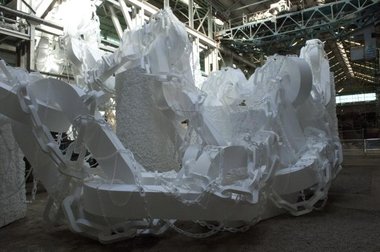
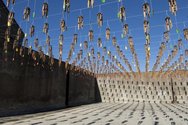
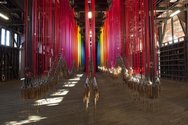

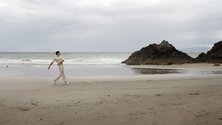



 Two Rooms presents a program of residencies and projects
Two Rooms presents a program of residencies and projects Advertising in this column
Advertising in this column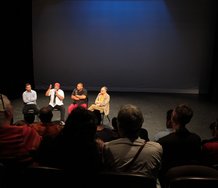
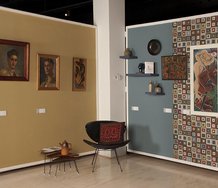

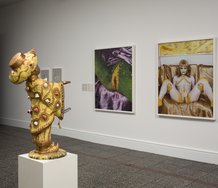
This Discussion has 0 comments.
Comment
Participate
Register to Participate.
Sign in
Sign in to an existing account.